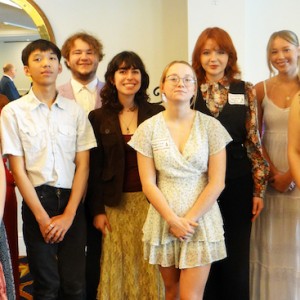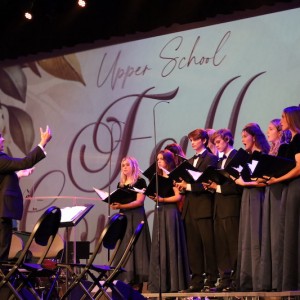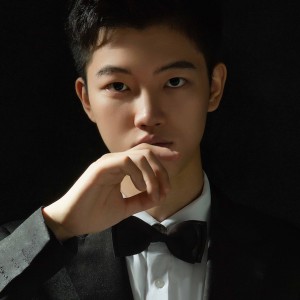The year is 2005 and Dr. Larry Thompson, president of the Ringling School of Art, is nervous. Construction crews, cameras, gold-handled shovels and crowds of spectators gather at the north end of a soon-to-be-transformed campus for the groundbreaking of the Ulla Searing Student Center. It’ll be five stories tall, says Thompson, a cutting-edge student life facility with residence halls and all the services students could need or want from their college. “One-stop shopping for the students,” he quips. He’s been president of the institution for six years now, and still feels kind of new, but he fought for this one—his first major initiative as head of the school. Some doubted his plans for a five-story-high campus in sleepy Sarasota; more believed. And as the shovels dig into the dirt for the first time, a single thought keeps racing through his mind like a caterwauling clown on a runaway merry-go-round: “Oh my god. I’m destroying this campus.”
To understand Dr. Larry Thompson is to approach paradox. A “guidance counselor’s nightmare,” he’s right brain and he’s left brain; he’s a mathematician, a trained actuary, a lawyer and somehow president of an arts college; he’s the man who rescued the Rock and Roll Hall of Fame from a pile of squabbling scraps through sheer force of will, and then looked the Ringling faculty in the eye and humbly told them he had no vision for their school—while interviewing to be president of the college. And if the hair has gotten wispier with age, the smile still beams with a goodhearted mischief to rival even J.M. Barrie’s best. Or worst.
But for a man without vision, Thompson sure has seen a lot in his tenure, expanding the sprawling campus from 24 acres to 54, and adding near 100 new buildings to those acres, including campus landmarks, all the while introducing groundbreaking new majors to the curriculum. It’s a group effort, he says, deflecting praise to faculty and community patrons, but the common denominator cannot be denied. And the story begins, as so many of Thompson’s do, with a phone call in the night, and a headhunter on the line.
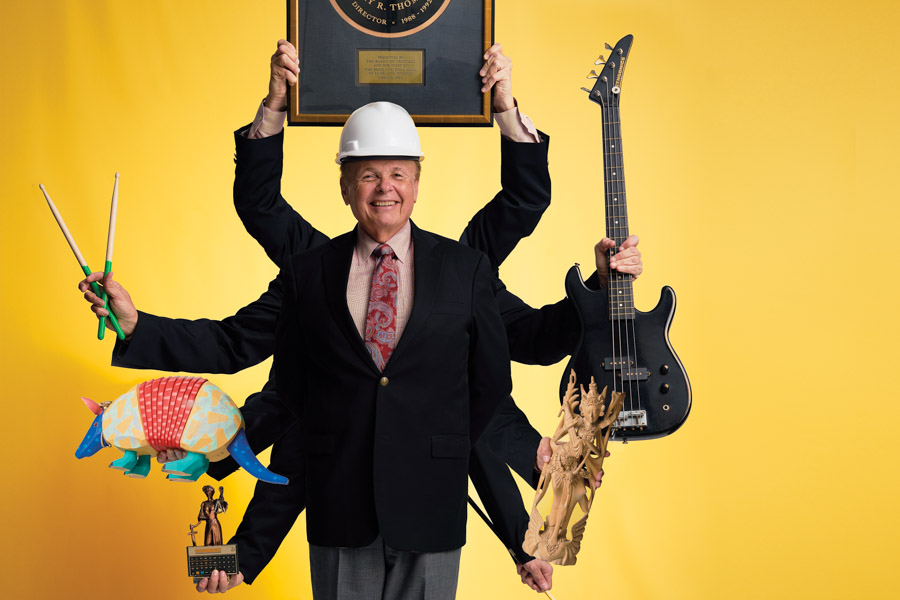
BIDING TIME
Fresh off twin victories starting up the Rock and Roll Hall of Fame and rehabilitating the Flint Cultural Center in a major turnaround, Thompson’s cranium was again in high demand, with folks from all around angling for a peek inside—including the Ringling School of Art. “All I wanted to do,” says Thompson, “was get back into higher education.” He didn’t know why they were calling him, and politely let them know, that although he really did appreciate what artists do, he was no artist himself. He was interested, of course, but perhaps they had the wrong number. “We need an out-of-the-box candidate,” they replied. Looking around, deciding that a room really wasn’t quite the same thing as a box, and even so there was a door he was allowed to use, Thompson agreed.
The first interview ran two hours—a quick hotel job with polite conversation and air as still as the water. Thompson decided to hit campus. He sat. He watched. He interviewed students. He didn’t tell them who he was. They dished the good stuff. “I was just impressed so much by the attitude of the students,” Thompson recalls. “How they were passionate, how they loved the faculty, how they loved this.” Something was wrong in that nothing was wrong. Denmark was decidedly un-rotten and Thompson wasn’t quite sure what to do. He could right a sinking ship, yes sir, but smooth sailing was a whole other sunburn. “I was in deep trouble,” he says. Enter interview number two and a faceoff with the faculty. “What’s your vision for Ringling?” someone asks, and Thompson pauses. “I don’t have a vision,” he says. “Because it’s not about my vision, it’s about your vision. I’m going to spend time listening to what this community wants, not what I want.”
Ringling offered the job. Thompson took it. It’s July 1999. Again, in his mind, that caterwauling clown, six years younger and already gaining speed: “Don’t screw it up.”
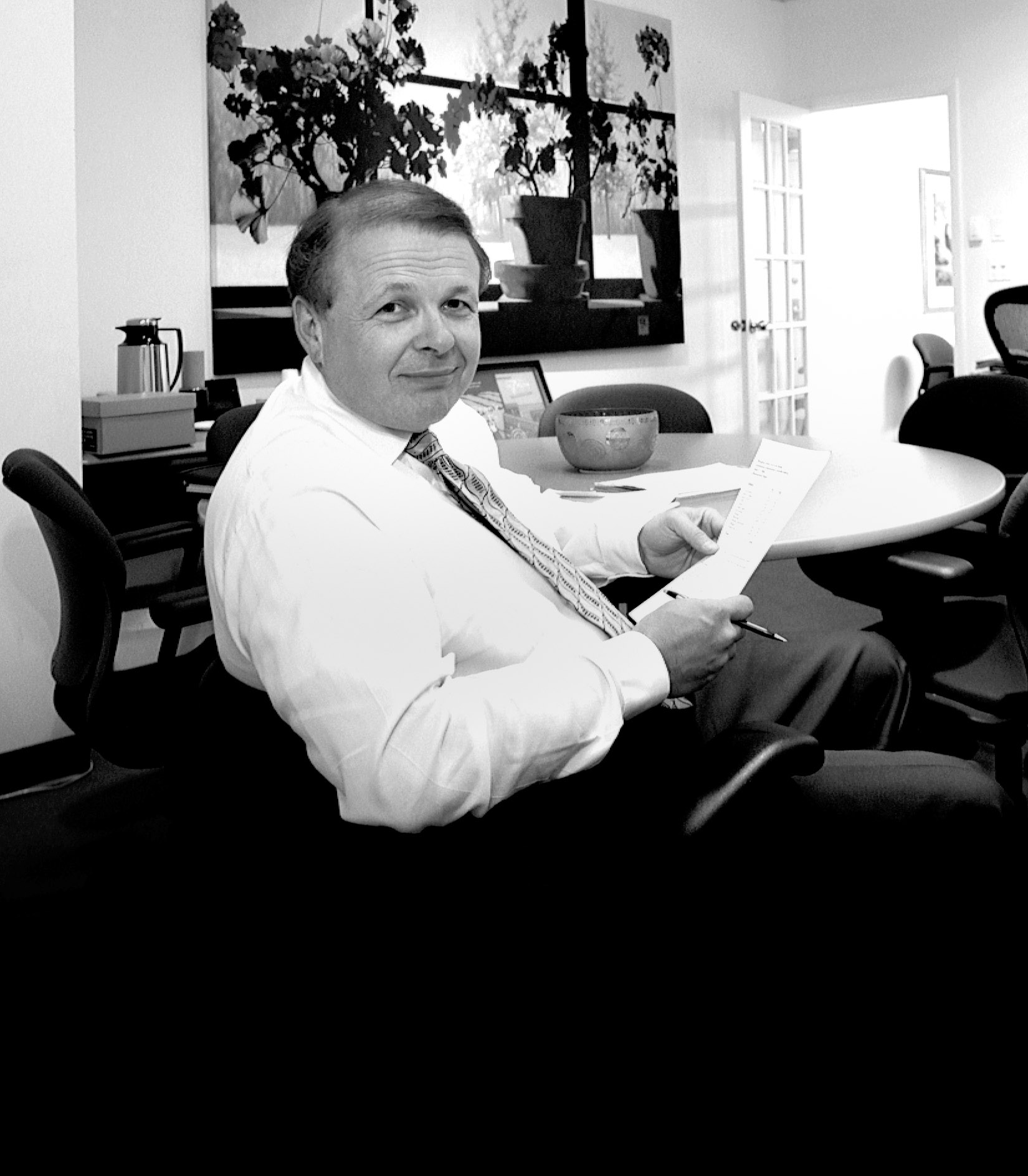
BREAKING THE SILENCE
For nearly six years, Thompson listened. He listened to faculty. He listened to staff. He even listened to students. He listened to the community at large. And he watched. Across town, they were building a Ritz-Carlton. They were putting condos on top. Closer to home, he had rising enrollment, near 75% of his students living on campus—an unusually high number for an art and design college—and a student life program run out of an overstuffed structure he could only describe as “a Quonset hut.” “We need to build,” thought Thompson.
“It was a terrible building,” he agrees today. A suspected relic of World War II, the hut housed not only student life, but human resources, counseling services and more. Yet, the student life program and all its activities remained a prominent part of the school’s image. “We bragged about that in our recruiting materials,” says Thompson. He needed a student life facility. But, more immediately, he needed a lot of money to build a student life facility. “And this is how creativity works,” he says. If they could put condos on top of a Ritz, he could put residence halls on top of his student life center. It would be five stories tall and have its own revenue stream to finance a bond. The city approved, passing “the variance of all variances,” says Thompson, and raising the ceiling on Ringling’s campus from three stories to five stories. Willis Smith Construction breaks ground in 2005, and, in 2006, the Ulla Searing Student Center opens to roaring celebration.
The campus isn’t destroyed; it thrives. The merry-go-round slows, but life speeds up. Enrollment continues to increase and the college’s star continues to rise with it, officially changing its name to the Ringling College of Art and Design in 2007. Two years later, Goldstein Hall opens its doors, followed by a gleaming new academic center on the south side of campus to mirror Searing on the North. Both of the new buildings are five stories tall. In 2016, the academic center will be named the Larry R. Thompson Academic Center.
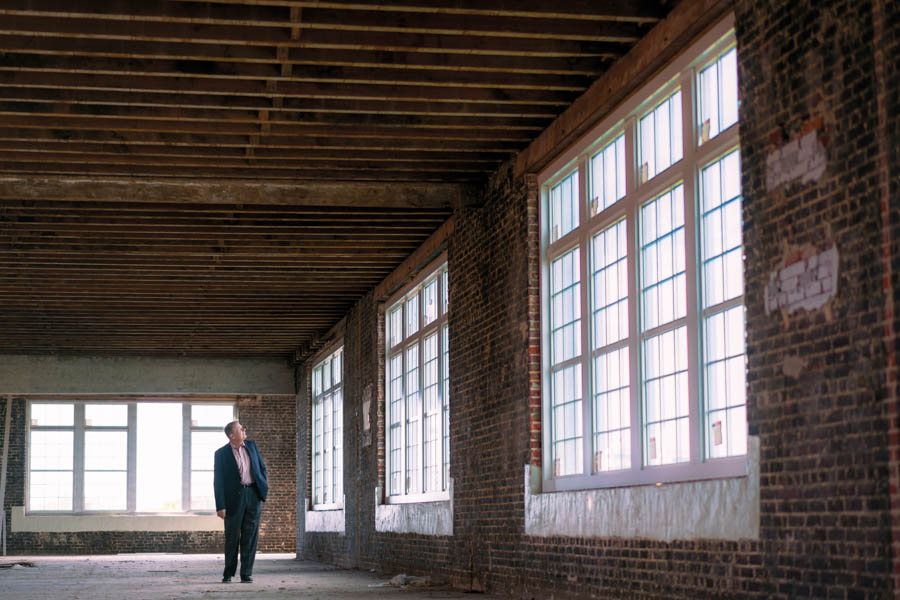
CHANGING MINDS
But as all great safecrackers and college presidents know—it’s what’s on the inside that counts. And in Thompson’s tenure, Ringling College has not only expanded its architectural footprint by leaps and bounds, but filled those buildings with a steadily expanding curriculum consistently offering new avenues of exploration for incoming students. It would be the second time Thompson tried to destroy the campus.
From the beginning of his tenure, Thompson knew that growing student enrollment would need to be a priority if the college itself were to grow into its full potential. The school had about 850 students. Thompson set 1,000 as the goal. The pushback was immediate. Larger class sizes would destroy the character of the institution, said the faculty, and lowering admissions standards to fill them would do irreparable damage. What’s this new president thinking? Who voted for him anyway? Facing an imminent (though likely aesthetically pleasing) revolution from the faculty, Thompson quietly decided that asking permission was perhaps the wrong tack to take. “Strategically, however,” he says, “we needed to grow in order to survive.” And if he couldn’t expand the programs the school already had, he could introduce new ones, bringing in students pursuing other interests to populate different classes.
2007 saw the addition of advertising design, game art design and even film, laying the seed for what would be yet another transformative leap in the campus’ footprint. Still, arguably Thompson’s greatest impact on the college curriculum came with the introduction of the Business of Art and Design major in 2008.
Like a well-painted machine, Ringling College had long ago mastered the art of matriculating highly skilled and creative graduates into the world, but a harsh truth about that outside world remained woefully unrepresented—that out there, students would find a lot more business suits than berets and smocks. It’s a black-and-white world of profits and powerpoints, where creativity gets a timetable and nobody prints their pie charts in color. And in the battle between art and business, creativity and profit, Ringling College produced fine soldiers, but poor tacticians. That would change with the Business of Art and Design program, where students learned not only the importance of creativity and design in the business environment, but also how a business actually works. Armed with this knowledge, graduates leave better equipped to become entrepreneurs themselves or to translate artistic values and strengths to their business-minded colleagues in a work environment. “They become almost ambassadors,” says Thompson, “because they understand both sides.” One graduate, who for her thesis helped a series of computer animation students manage their thesis projects, has already found a major production position with Pixar.
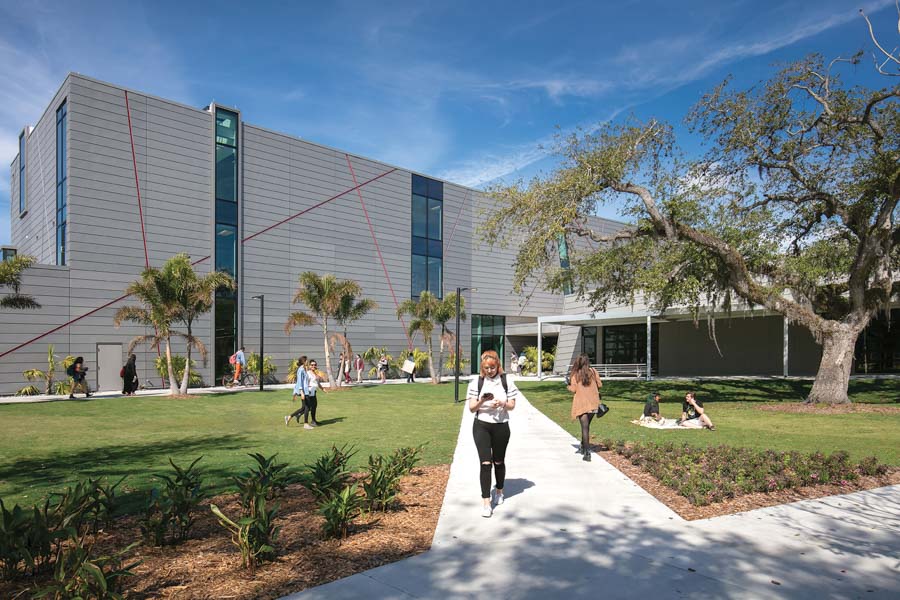
The following year, the school would also introduce a motion design major (and open those five-story buildings), but it was the film program that took off like a hit franchise over the next decade, drawing major Hollywood stars to campus and being named among the top programs in the country by The Hollywood Reporter. And as that seed bloomed, and more and more names like Roman Coppola expressed interest in working with Ringling College students, Thompson and his team proposed what seemed to them an immensely reasonable idea—to construct a massive sound stage and post-production facility on campus, and invite established filmmakers to take advantage, as long as they also brought students on the project as crew. The complex would be located between Coconut and Central avenues, off Martin Luther King, Jr. Way and by Newtown. This time, Thompson was accused of trying to destroy an entire community.
But concerns over Newtown gentrification quickly abated as plans became clearer, says Thompson. The new facilities would serve as an economic driver for the neighborhood, the school argued, and the new student housing in the area—not to exceed three stories, in deference to existing construction—was the school’s evidence of investment in becoming a larger part of that community, not transforming it. Former Mayor Willie Shaw voiced his approval, and before the sound stage even opened, Ringling College was in talks with stars like Dylan McDermott, Kevin Smith and Justin Long to collaborate on movies and webseries. The school broke ground on these cinema dreams in 2015.

BACK TO THE FUTURE
Thompson, however, now thrice accused of wreaking destruction in his tenure (including once by his own self), was already making moves to head off a fourth. Film had taken off, as had game art and computer animation. Ringling College regularly made headlines in the world of digital arts education, with graduates recruited by Disney, Sony Pictures, Google, MTV and more. Some won Academy Awards. Others went to international gaming conferences and won prizes there. But as these glamorous few soaked up all the ink, Thompson looked to reinforce the importance of traditional fine arts, to see that the fundamentals didn’t get lost in all the technology. “We’d embraced the idea that the computer might well become the next paintbrush, and that’s exactly what’s happening,” says Thompson. “But they have to be an artist first.”
Enter the Basch Visual Arts Center—what began with a handshake and a one-page contract turns into a two-building complex housing gallery space and studios for students working in everything from ceramic and woodworking to photography, print-making and 3D-printing, as well as the college’s first hot and cold glass shops. At the eleventh hour, Thompson tells them to add classrooms to the top. This is unrelated to a fire that will break out during construction, creating more news than damage.
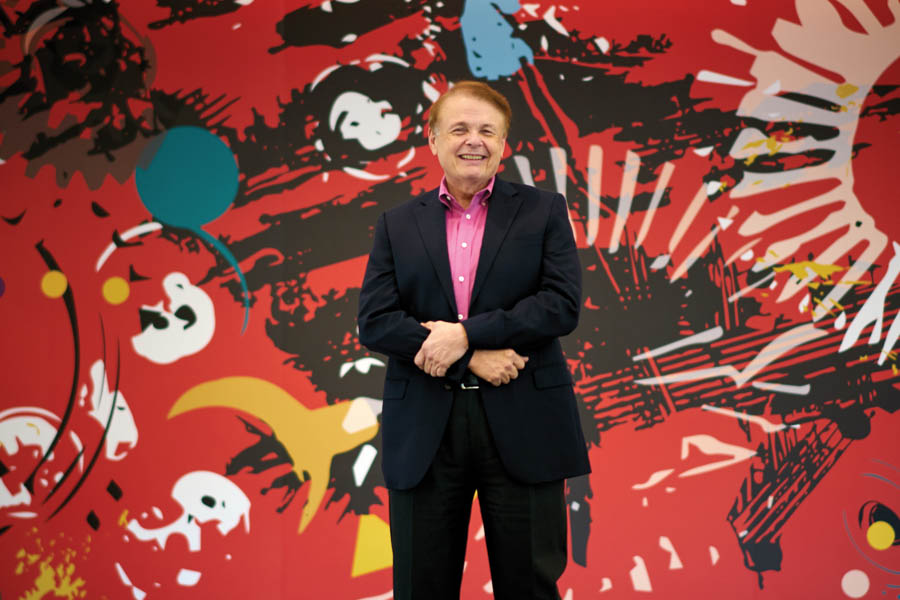
Now completed, the Basch Visual Arts Center rises in the heart of campus, and Thompson wouldn’t have it anywhere else. “Symbolically, it demonstrates that all of our students are artists first, no matter the technology,” he says. This year’s new majors reinforce that harmony between the tried and true and the cutting edge, as the college introduces both Creative Writing and Virtual Reality to the curriculum.
But for Thompson, the man whose favorite day is commencement (“I feel like a proud parent, even though I had nothing to do with it.”), there is little time for rest or celebration or to achieve a work-life balance. (“My wife will say I don’t, and that’s pretty true.”) There’s the long-gestating Sarasota Museum of Art to shepherd over its December 2019 finish line and new majors to coordinate, including an entertainment design program currently seeking accreditation. All told, tales of Thompson’s retirement have been greatly exaggerated.
“I’ve got plans on plans,” he says grinning.
Tune into the November 2018 edition in this two-part feature to see what makes Thompson tick . . .






